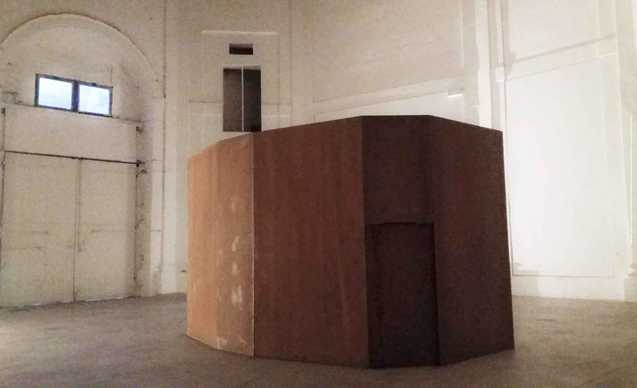Gregorio Botta
Gregorio Botta Machina
Saturday 26 November at 7 pm in the Visual Arts Center of Pescheria di Pesaro is inaugurated Machina personal exhibition of Gregorio Botta, organized for the Christmas period by the Municipality of Pesaro -Assessorato alla Bellezza and Sistema Museo.
Curated by Ludovico Pratesi, Gregorio Botta's exhibition is based on the reinterpretation of the architectural spaces of the Pescheria, through sculptures and installations of considerable impact.
After the exhibition by Jannis Kounellis, an artist of a later generation confronts the architectural spaces of the Visual Arts Center, with a different but complementary expressive language, through a series of works that bring the center back to its past, re-read with awareness and rigor.
In the Loggiato there are three rectangular iron tables, reminiscent of the ancient fish stalls placed in the ancient Pescheria, where small streams of water flow from thin wounds, while on the walls a series of wall sculptures are shown, recalling the lanterns of old. At the center of the former Suffragio church the artist has reconstructed the twelve-sided iron structure in scale, to create a closed and threatening sculpture: a sort of monolith, inside which a light source produces a rotary movement, visible only through some thin open slits in the structure.
"Machina is a project linked to the idea of Renaissance and Baroque theatrical machines, which were used in particular civil and religious occasions, and were commissioned to great artists like Giulio Romano or Gian Lorenzo Bernini" explains Ludovico Pratesi. "In this case
Botta has used his usual expressive language, which transforms styles taken from Arte Povera and from Minimal art into metaphysical sculptures full of poetic suggestions, to create a series of ad hoc works for the Pescheria spaces ".
"Mine is an art of taking away, of the little, of the less, hoping to arrive at an art of nothingness. An art that disappears and leaves only, like a vibration, like a secret engine, the action for which it was born "explains Botta. On this occasion, the artist wanted to compare with the history and the memory of the exhibition spaces, reinterpreted through interventions that accentuate the suggestive and mysterious dimension through skilful balance between light and shadow, opacity and transparency, lightness and heaviness.
"The visitor is invited to reflect on the ability of the art to transform the genius loci into an experience that underlines and synthesises the guidelines of a sedimented memory, to project them into a suspended and intimate dimension, which suggests a meditative relationship with the work "adds the curator.
The exhibition is accompanied by a catalog, published by Silvana Editoriale, with a text by the curator Ludovico Pratesi and an interview with the artist.
Gregorio Botta
Gregorio Botta was born in Naples in 1953, but soon (1960) moved with his family to Rome, where in the eighties he attended and graduated from the Academy of Fine Arts with Toti Scialoja.
Between the end of the eighties and the early nineties, his artistic initiation became public with the participation in exhibitions in different galleries of the city: his first personal exhibition dates back to 1991 at the Il Segno Gallery, with which he built a lively collaboration relationship. In recent years, the critics are also interested in the work of the artist, on the occasion of Transparency of Italian Art on the Silk Road by Achille Bonito Oliva, held in Beijing in 1993, for the XII Quadrennial in Rome and the Biennale dei Parchi at the National Gallery of Modern Art in Rome, in 1996 and 1998, and to the staff presented in the same year by Ludovico Pratesi at the Italian Institute of Culture in Cologne. The relationship with history, with the classic and with the memory, always present, emerges clearly in the Post-Classic exhibition curated by Vincenzo Trione in 2013 in Rome, in the Forum. In 2015 he presented at the Milan Triennale An Other Last Supper by Vincenzo Trione, where starting from the ritual of the Last Supper by Leonardo, through the recreation of his cenacle, he developed a reflection on the sacredness of nourishment.
Works by Gregorio Botta are in the collections of the Mart in Rovereto, the Musma of Matera, the MAXXI, the Gam and the Macro in Rome, the ECB in Frankfurt, the Ministry of Foreign Affairs at the Farnesina, the Certosa di Padula (SA), and in the Naples subway.
